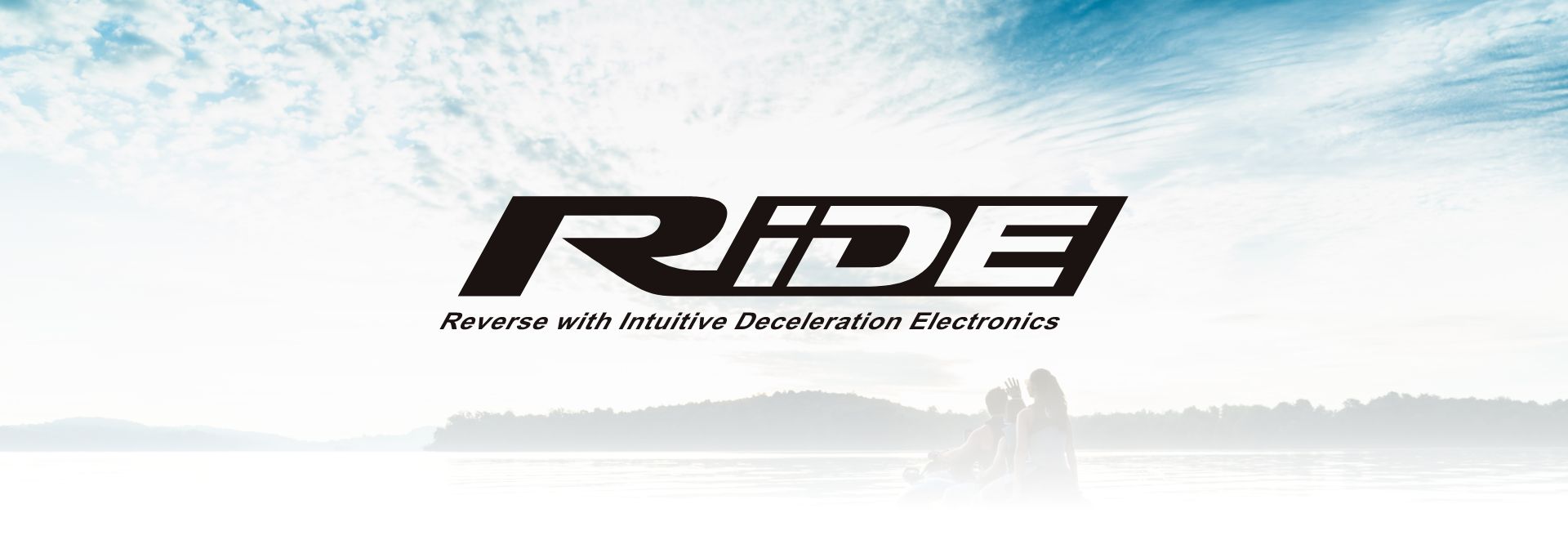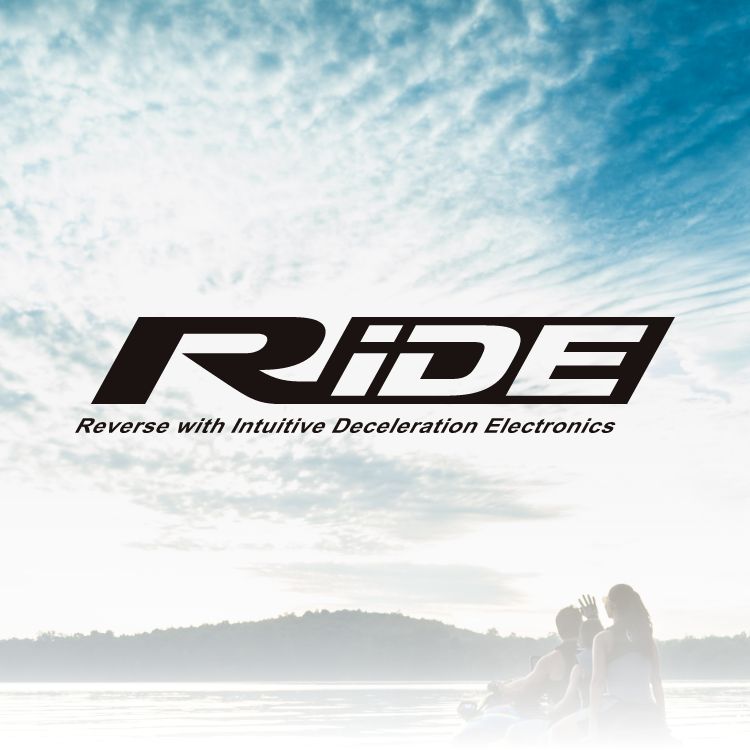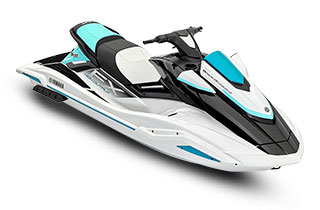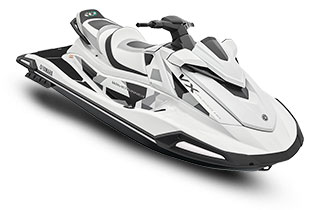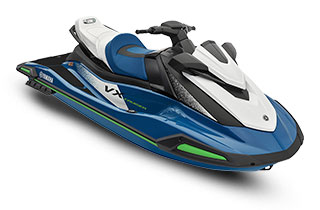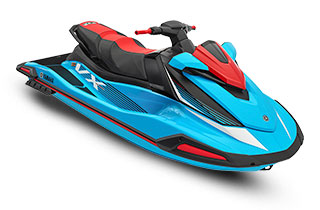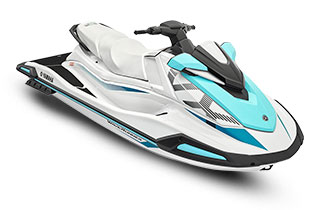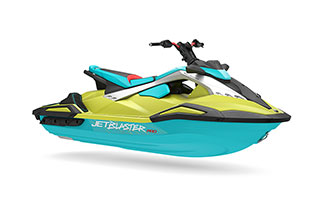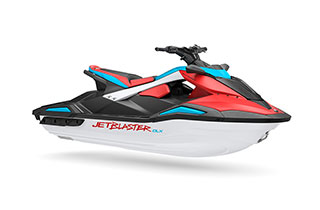RiDE
This page introduces RiDE.
Bringing peace of mind and more fun to your PWC life!
RiDE - a new and intuitive way to control your PWC when running, turning, decelerating and reversing.
Providing peace of mind, more fun cruise with stress-free control,
allowing for rapid deceleration, and more stable riding during deceleration.
Vehicle Dynamics Control
RiDE provides independent functionality of the left and right levers, with the right lever controlling forward and the left lever controlling reverse. As a result, you can reverse by just using the left lever while keeping both hands on the handlebars. This provides single-action forward/reverse capability.
It also provides the ability to decelerate using the left lever while riding. While delivering excellent deceleration ability, the posture of the rider is also maintained.
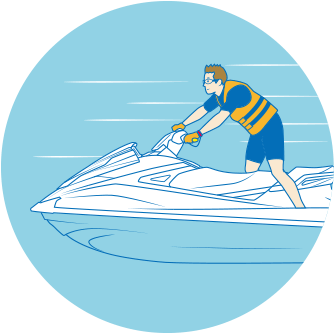
Run
After starting the engine, use the right lever to take off smoothly from rest.

Turn
Use the right lever throttle and steering control to turn. It's also possible to steer while decelerating (using the left lever).
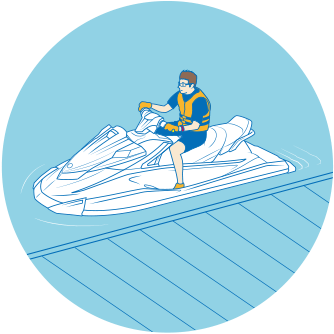
Decelerate
As with traditional PWCs, you can decelerate by releasing the right lever. But now you can also decelerate stably by simply using the left lever.
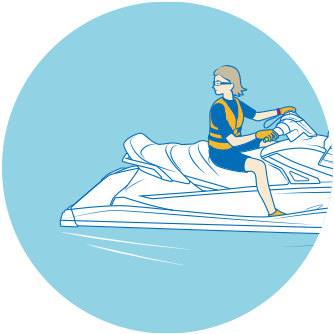
Reverse
Simple operation of the left lever allows reversing without the need to remove your hands from the handlebars.
⚠ Attention
Take early action to avoid collisions. The RiDE system is not a braking device for avoiding dangerous situations.
Features
Whether they want to go straight, turn, decelerate, or reverse, the rider has complete control of anything they want to do through the handlebars.
With RiDE, all riding functionality is available at the handlebars. It is designed to provide core operation through the levers and steering. In the pursuit of craft-focused riding for fun, RiDE provides intuitive handling and ease of use.
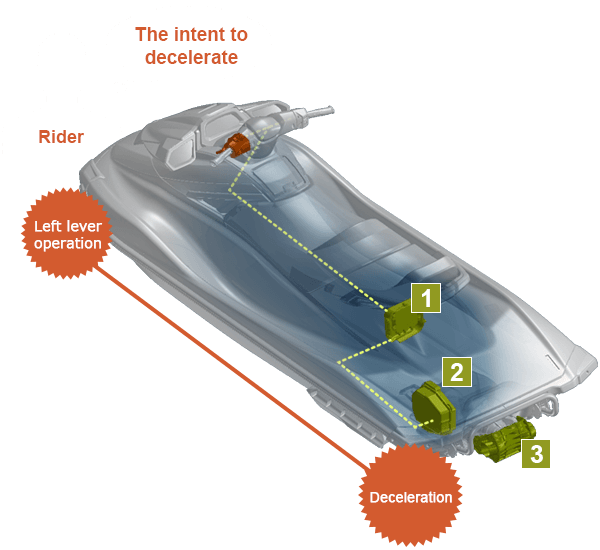
-
1
ECU(Engine control unit)
An appropriate reverse gate operation timing is given based on engine rpm and lever input
-
2
SCU(Shift control unit)
Receives ECU input and controls the actuator that moves the reverse gate
-
3
Reverse Gate Control
Changing the direction of the jet thrust
Deceleration functionality for comfortable riding
With RiDE, deceleration occurs by deflecting the jet thrust forward using the reverse gate.
This deflected jet thrust is split into left/right directions.
Discharging the jet thrust upwards and downwards was also thought of during development, but proved to be problematic for providing stable deceleration.
To solve this problem, the jet thrust is discharged in a sideways direction, left and right.
How stable deceleration is achieved
By having the jet thrust move sideways left and right, there is less rotational force around the center of gravity of the craft, allowing more placid behavior.
This allows good posture when decelerating, giving a sense of stability.
However, discharging the jet thrust up and down creates greater rotational force around the craft's center of gravity, causing a nosedive where the bow dips downwards.
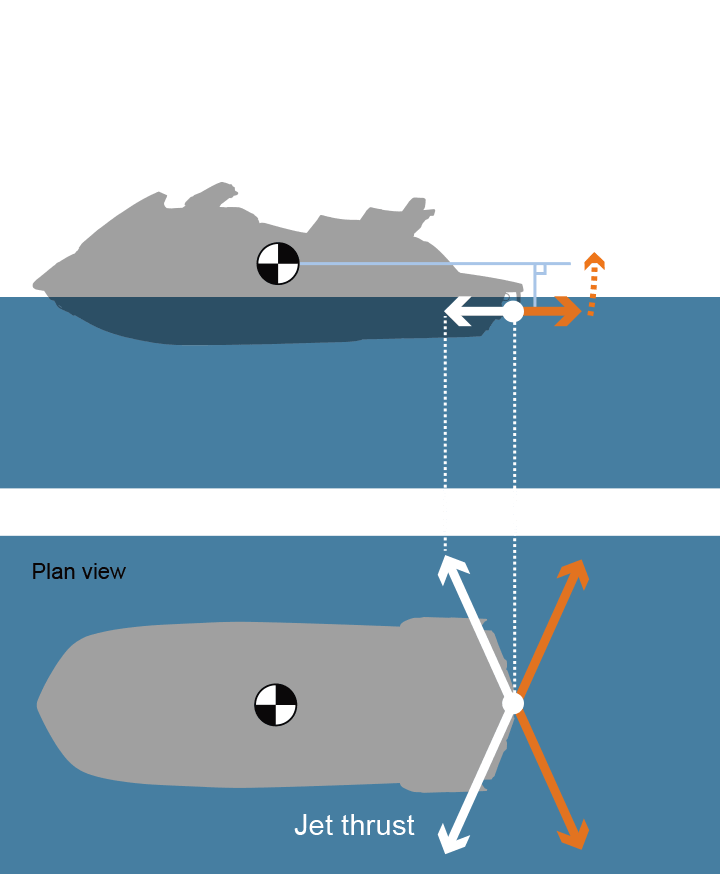
When the jet is directed sideways
As the distance between the vector of the jet thrust during deceleration and the center of gravity is short, the moment around the center of gravity is small. There is thus minimal changes to the craft's posture, making it easier to maintain a stable posture.
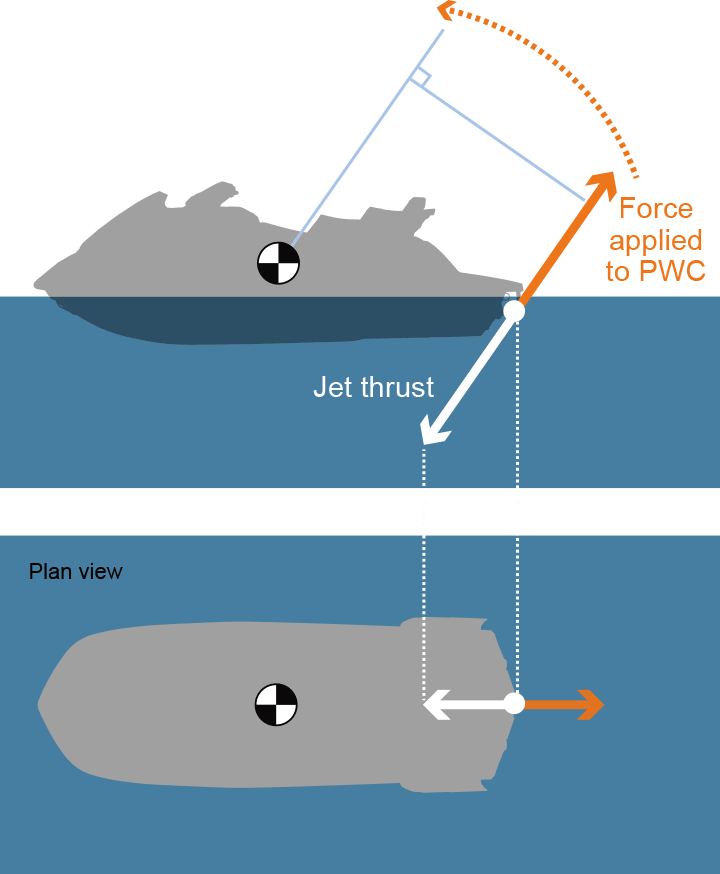
When the jet is directed vertically
As the distance between the vector of the jet thrust during deceleration and the center of gravity is long, the moment around the center of gravity is large. This is likely to lift the stern, in turn causing a nosedive.
Enabling steering operation even when reducing speed
When the jet is directed sideways, a difference in the amount of jet thrust between the left and right side will occur when the jet
nozzle direction is changed via steering operation. This difference in jet thrust enables steering even when reducing speed.
Adjusting the jet thrust in order to make a turn is difficult when the thrust is directed vertically.
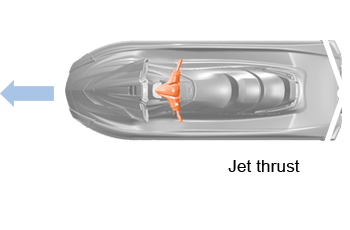
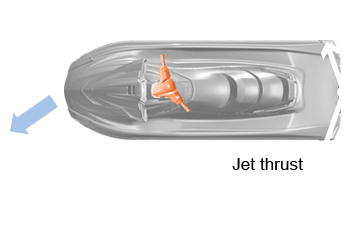
By optimizing the shape of the reverse gate, the difference between left and right jet thrust can be adjusted via steering, thus enabling the rider to turn even when reducing speed.
⚠ Attention
Take early action to avoid collisions. The RiDE system is not a braking device for avoiding dangerous situations.
